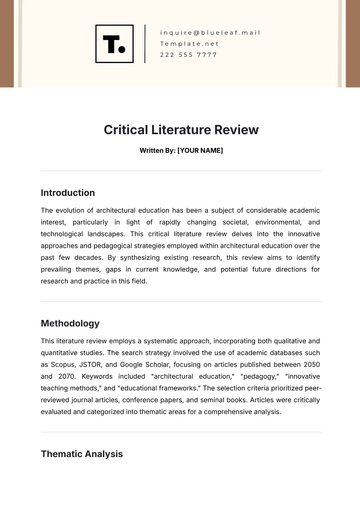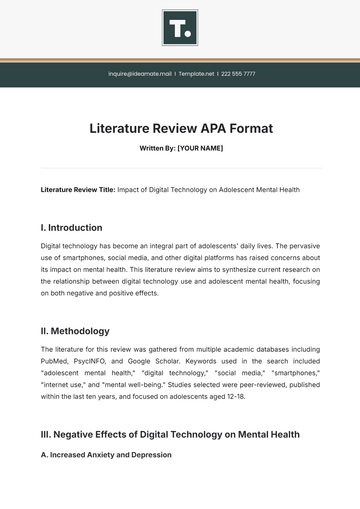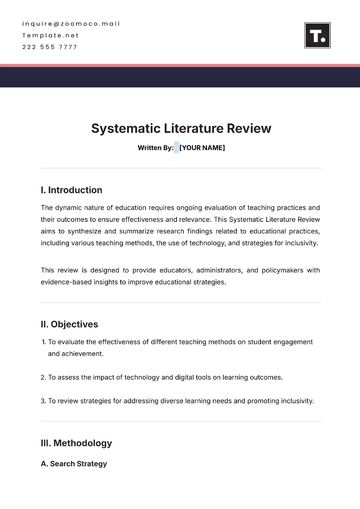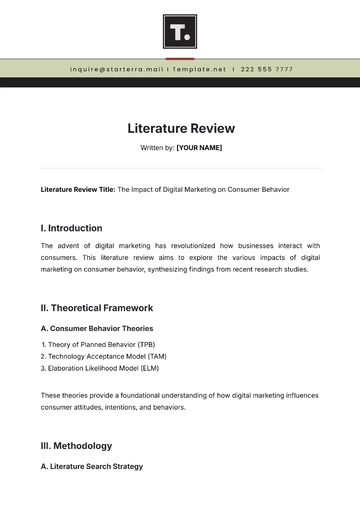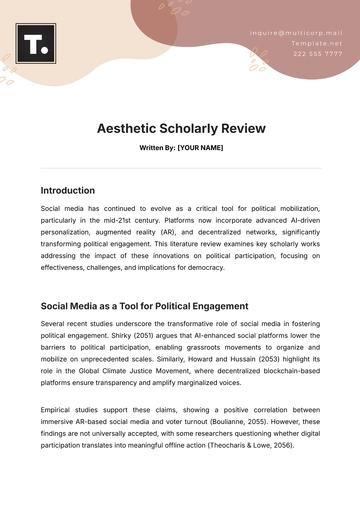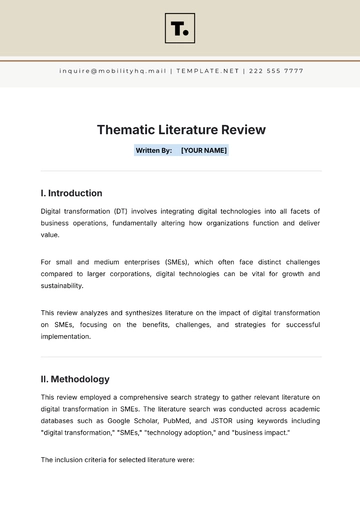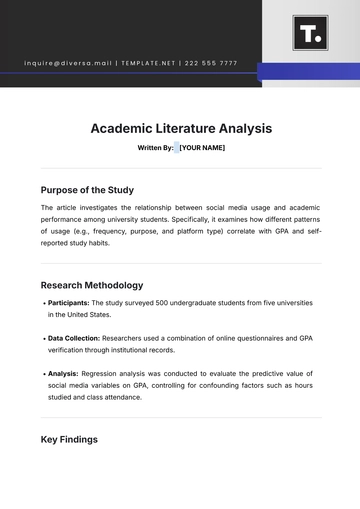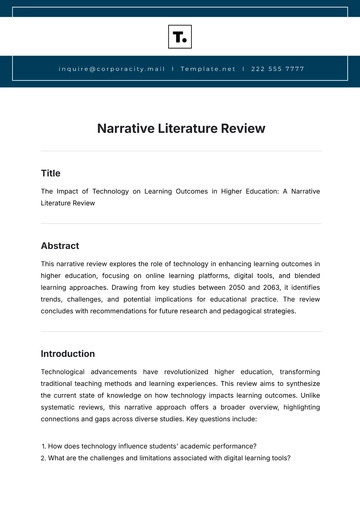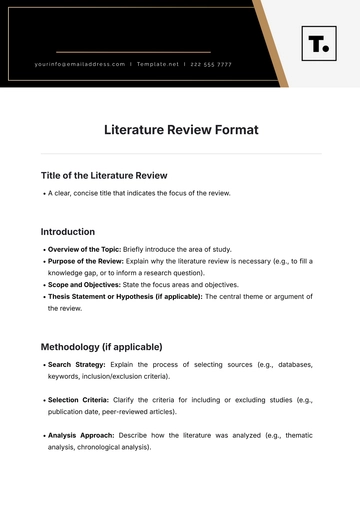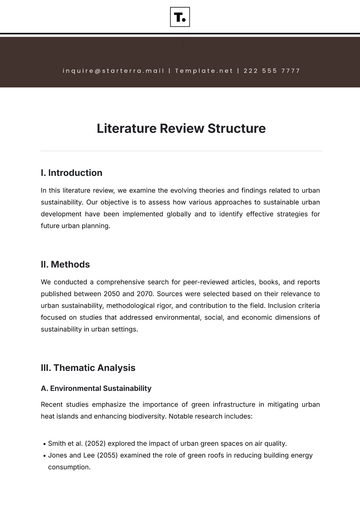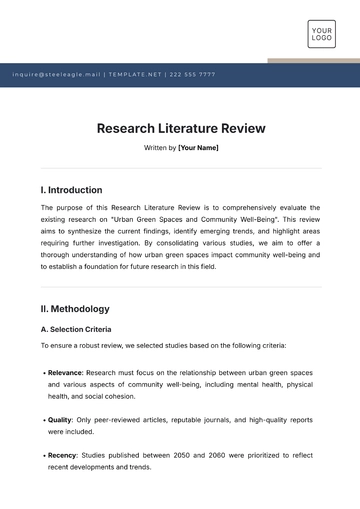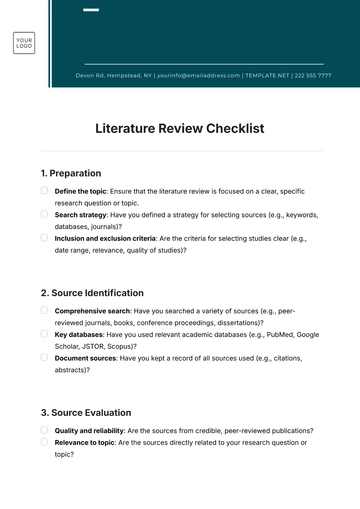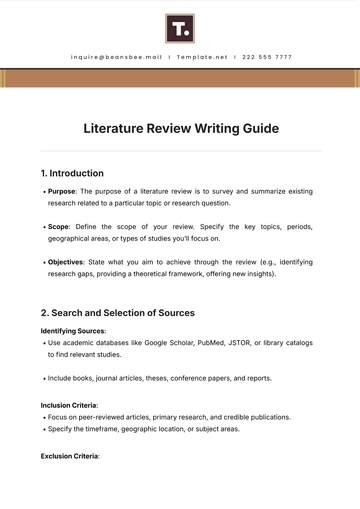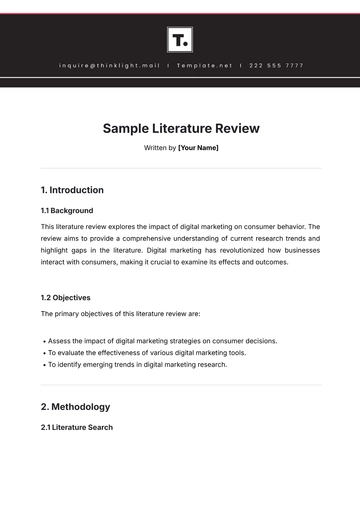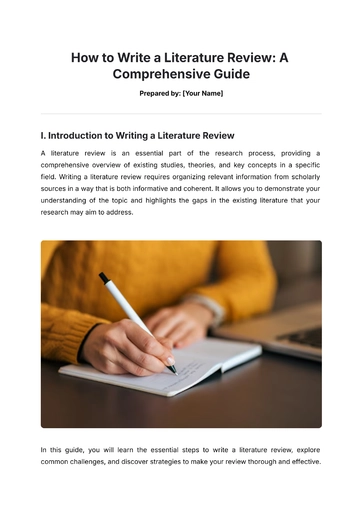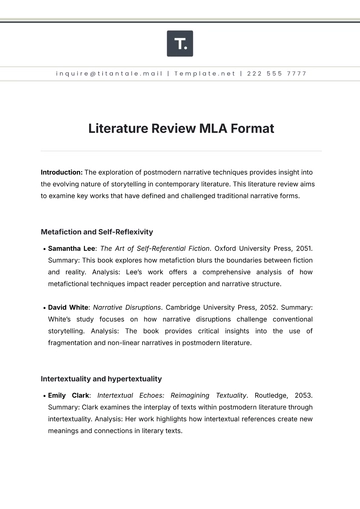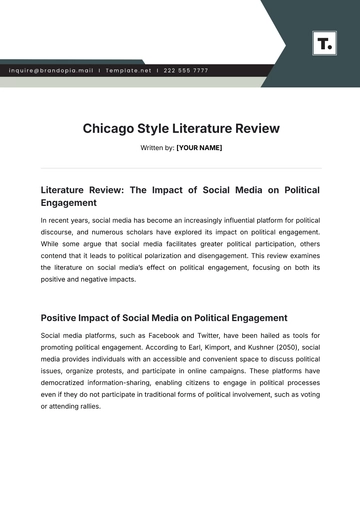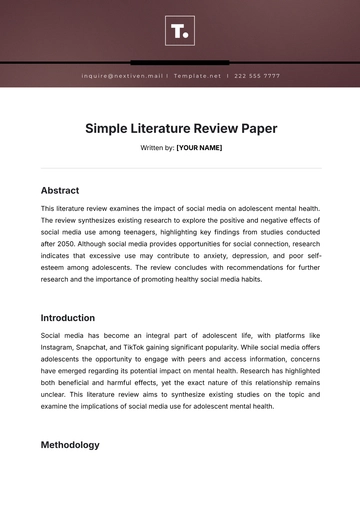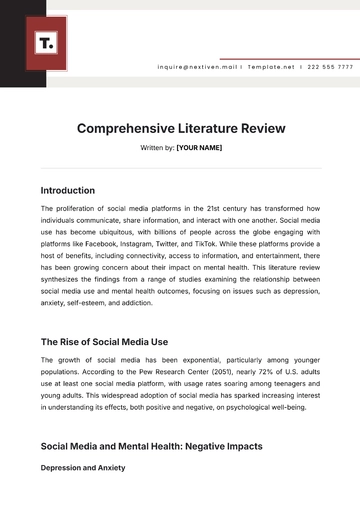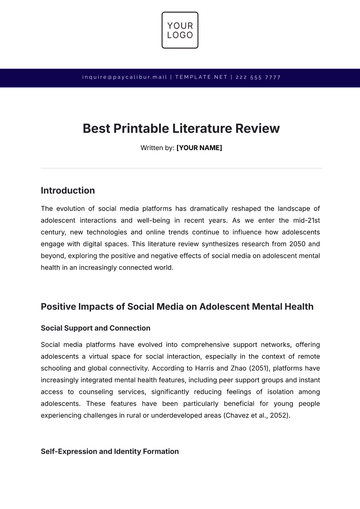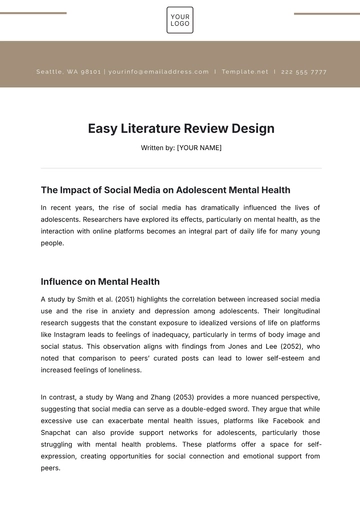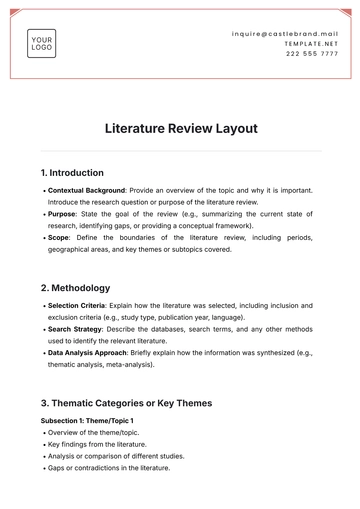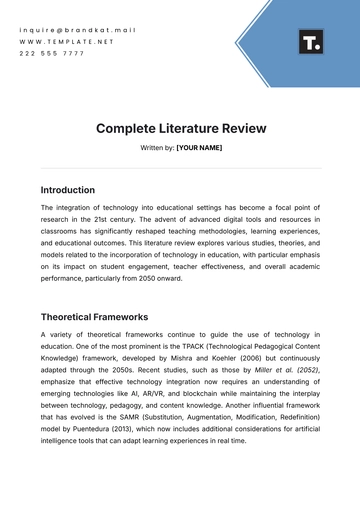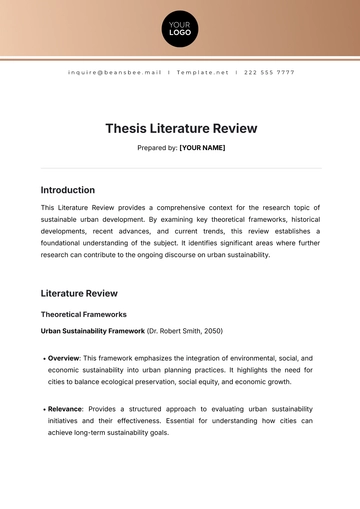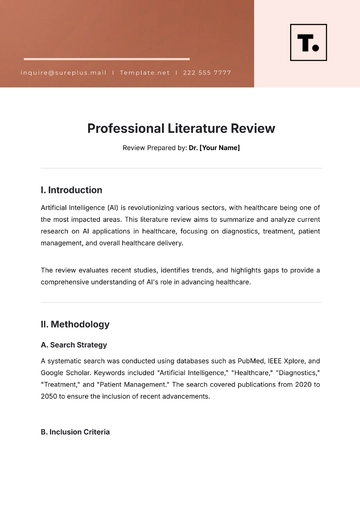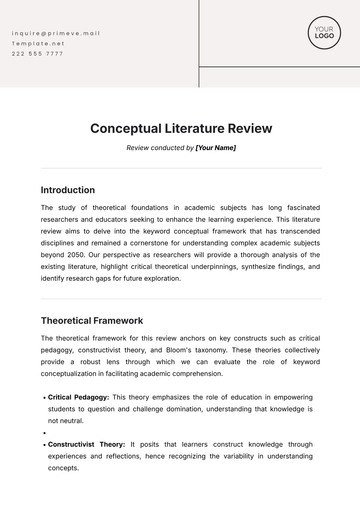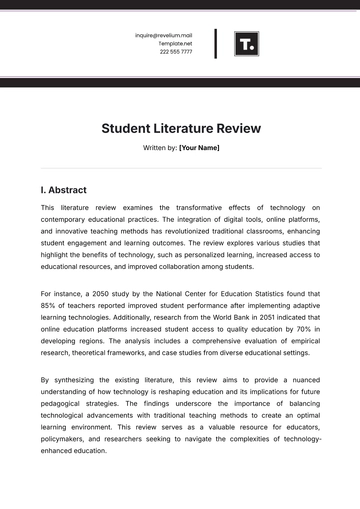Free Social Sciences Literature Review
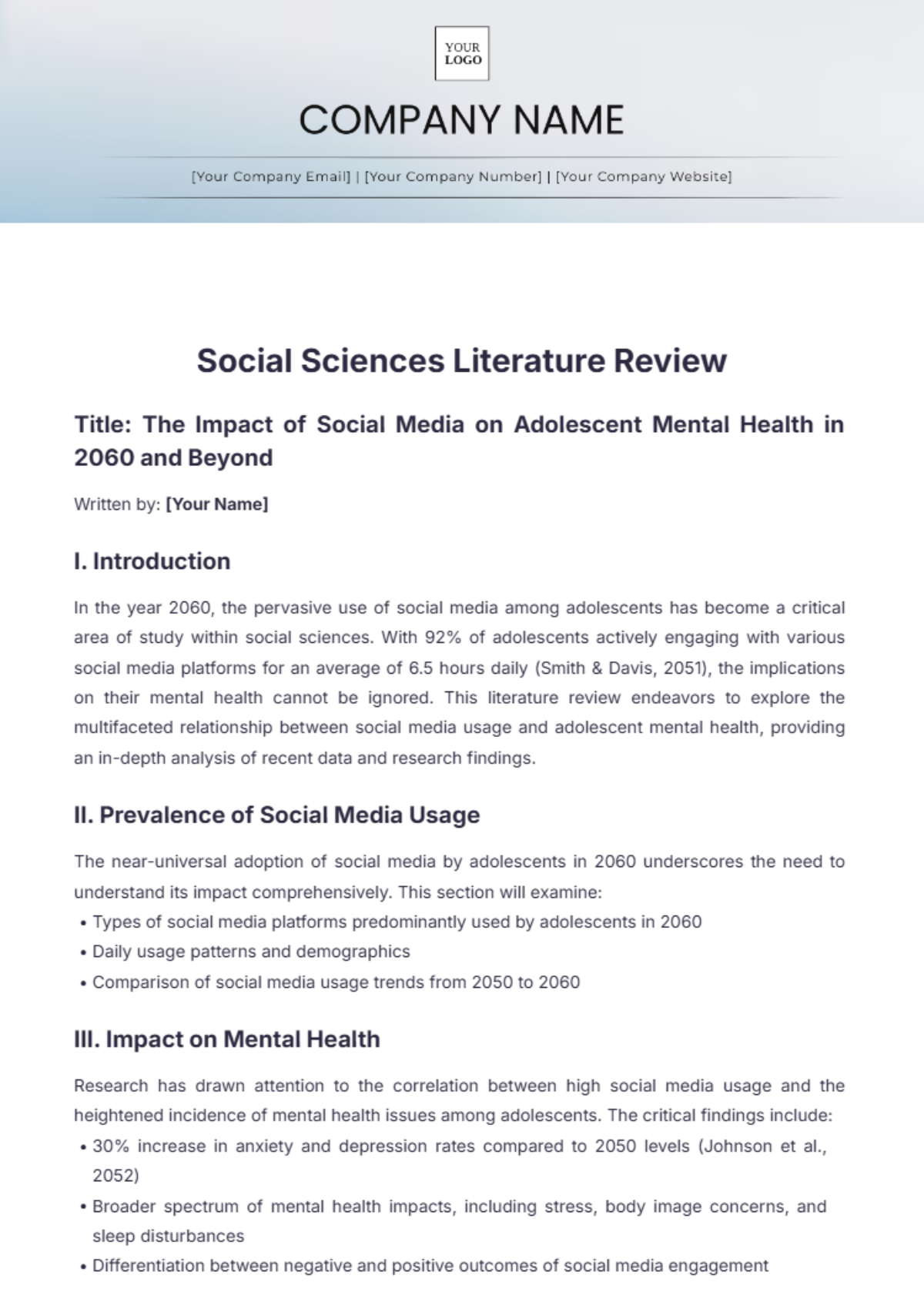
Written by: [Your Name]
I. Introduction
In the year 2060, the pervasive use of social media among adolescents has become a critical area of study within social sciences. With 92% of adolescents actively engaging with various social media platforms for an average of 6.5 hours daily (Smith & Davis, 2051), the implications on their mental health cannot be ignored. This literature review endeavors to explore the multifaceted relationship between social media usage and adolescent mental health, providing an in-depth analysis of recent data and research findings.
II. Prevalence of Social Media Usage
The near-universal adoption of social media by adolescents in 2060 underscores the need to understand its impact comprehensively. This section will examine:
Types of social media platforms predominantly used by adolescents in 2060
Daily usage patterns and demographics
Comparison of social media usage trends from 2050 to 2060
III. Impact on Mental Health
Research has drawn attention to the correlation between high social media usage and the heightened incidence of mental health issues among adolescents. The critical findings include:
30% increase in anxiety and depression rates compared to 2050 levels (Johnson et al., 2052)
A broader spectrum of mental health impacts, including stress, body image concerns, and sleep disturbances
Differentiation between negative and positive outcomes of social media engagement
IV. Theoretical Frameworks
Understanding the mechanisms through which social media affects adolescent mental health involves applying relevant theoretical frameworks:
Social Comparison Theory: Explores how adolescents use social media to compare themselves with peers, often leading to feelings of inadequacy and low self-esteem.
Uses and Gratifications Theory: Examines how adolescents actively seek out specific types of social media content to fulfill psychological needs and the resultant impacts.
V. Exposure to Digital Content
The diversity and nature of digital content to which adolescents are exposed play a crucial role in shaping their mental health. Key areas of focus include:
Impact of user-generated content versus professional media
Influence of algorithm-driven content recommendations
Role of online communities and peer interactions
VI. Role of Online Interactions
Online interactions on social media platforms significantly influence adolescents' self-esteem and psychological well-being. This section will cover:
The quality and nature of social interactions
Positive reinforcement and social support networks
Cyberbullying and its long-term emotional effects
VII. Research Gaps and Future Directions
Despite extensive research, significant gaps remain in understanding the complex dynamics of social media's impact on adolescent mental health. Future research should address:
Longitudinal studies tracking mental health changes over extended periods
Impact of emerging technologies and new social media platforms
Intersectionality and the differential impacts on diverse adolescent populations
Development of interventions and best practices for managing social media use among adolescents
VIII. Conclusion
The intricate relationship between social media usage and adolescent mental health in 2060 presents both challenges and opportunities. This literature review synthesizes existing research to provide a comprehensive understanding of the potential adverse and beneficial effects, offering valuable insights for educators, policymakers, and mental health professionals. Addressing the identified research gaps will be crucial in developing effective strategies to support adolescents' mental health in an increasingly digital world.
- 100% Customizable, free editor
- Access 1 Million+ Templates, photo’s & graphics
- Download or share as a template
- Click and replace photos, graphics, text, backgrounds
- Resize, crop, AI write & more
- Access advanced editor
Elevate your research with Template.net's Social Sciences Literature Review Template. This fully customizable and editable template streamlines your literature review process. Editable in our Ai Editor Tool, it allows you to tailor every section to your unique requirements. Transform your social sciences research into a compelling narrative with ease, precision, and professionalism. Have your literature review stand out effortlessly!
